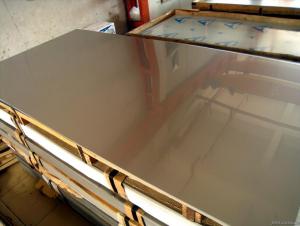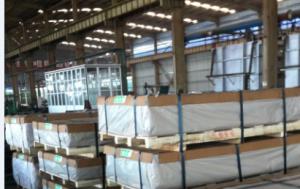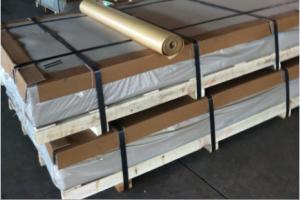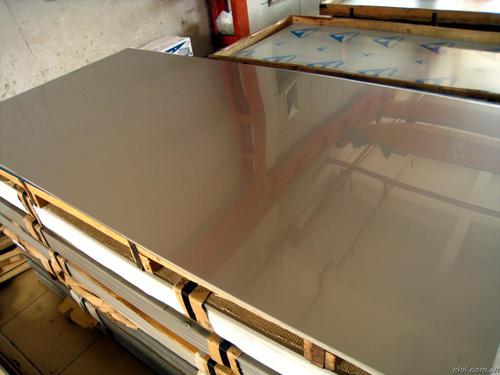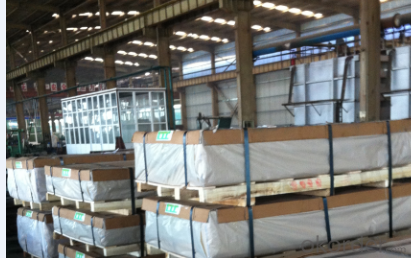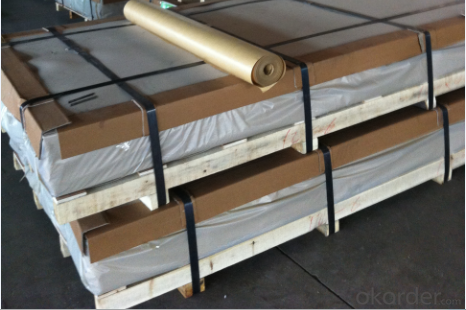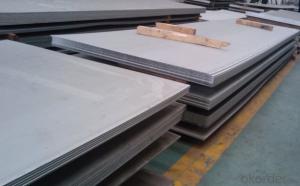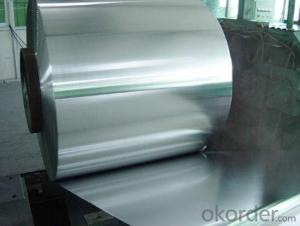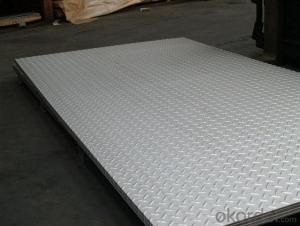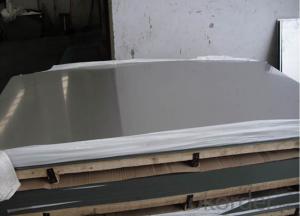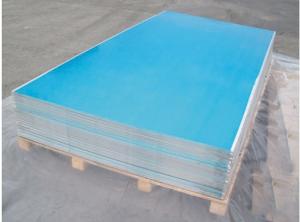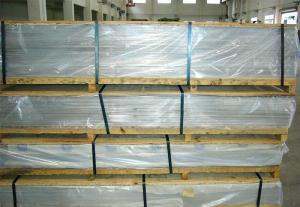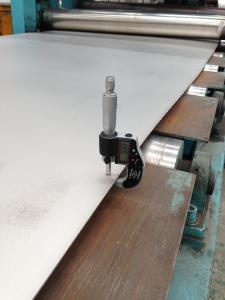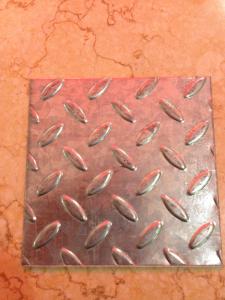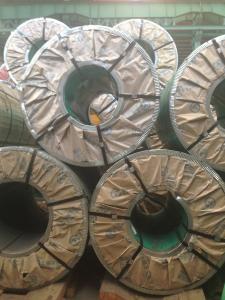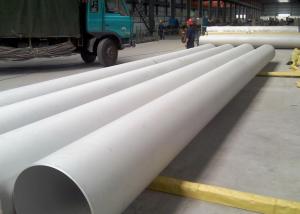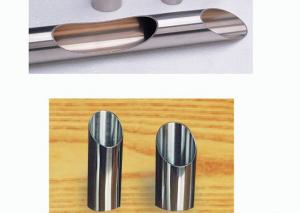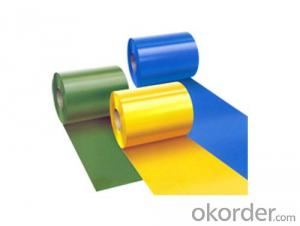Stainless Steel Sheet Stocks With Best Price In Our Stocks
- Loading Port:
- Shanghai
- Payment Terms:
- TT or LC
- Min Order Qty:
- 9 kg
- Supply Capability:
- 2000 kg/month
OKorder Service Pledge
OKorder Financial Service
You Might Also Like
1.Structure of Product Description
Cold rolled Stainless steel sheet is widely used in the field of construction field and decoration field, etc. The detailed grade are as follows: 201, 202, 301, 304, 316, 410, 420, 430, etc.
The surface is including 2B, BA, Mirror Finish, Checkered, etc.
2. Main features of the product
a. Competitive price
b. Frist-Class Service.
c. Shortest service.
3. Image.


4. Product detailed sizes:
1000mm*2000mm, 1219mm*2438mm,1220mm*2440mm, 1250mm*2500mm,1500mm*3000mm, etc.
5. FAQ:
What is the quality standard?
---Usually our standard is GB3880-2006 or else.
What is the width range?
---It is from 1000mm to 2500mm, etc.
What is the length range?
---It is from 2000mm to 6000mm, etc.
What is the MOQ for your products yet?
---Normally it is around 3 tons/each size.
How many tons did you export in one year?
---Normally it is around 9000 tons totally.
Where is your client from?
---Normally it is from Japan, USA, ENGLISH, SINGAPORE, ETC.
What is your mainly products?
---Normally they are stainless steel sheet, stainless steel coil, stainless steel checkered sheet, stainless steel mirror finished sheet, color coated stainless steel sheet, etc.
- Q: What is the minimum order quantity for stainless steel sheets?
- The minimum order quantity for stainless steel sheets can vary depending on the supplier and the specific product. However, it is common for suppliers to have a minimum order quantity ranging from 1 to 10 sheets. It is important to contact different suppliers and inquire about their minimum order requirements to find the best option that suits your needs.
- Q: What's the difference between 304 stainless steel and 301 stainless steel?
- 301, compared with 304 steel material, C content is much, Cr and Ni content is little, cold processing tensile strength and hardness increased, without magnetism, but after cold processing has magnetism
- Q: Can stainless steel sheets be used for food processing or medical applications?
- Yes, stainless steel sheets can be used for food processing or medical applications. Stainless steel is highly resistant to corrosion and contamination, making it suitable for these industries where hygiene and safety are crucial. It is easy to clean, maintain, and sterilize, making it an ideal choice for food processing equipment, surgical instruments, medical devices, and implants.
- Q: Are stainless steel sheets suitable for water treatment plants?
- Water treatment plants find stainless steel sheets highly suitable due to their excellent corrosion resistance. In such facilities, materials are constantly exposed to water and various chemicals, making this resistance crucial. Stainless steel sheets resist rust and corrosion caused by water, chlorine, chloramines, and other commonly used disinfectants in water treatment processes. Moreover, stainless steel can withstand high temperatures, making it ideal for use in water treatment plants that apply heat during specific treatment processes. Additionally, stainless steel is hygienic and easy to clean, ensuring the water remains free from contaminants or impurities. Overall, stainless steel sheets are a reliable and long-lasting choice for water treatment plants because of their corrosion resistance, durability, and hygienic properties.
- Q: How do you remove adhesive residue from stainless steel sheets?
- To effectively eliminate adhesive residue from stainless steel sheets, the following steps can be followed: 1. Commence by delicately scraping off as much of the residue as possible using a plastic scraper or your fingernail. Exercise caution to avoid scratching the stainless steel surface. 2. Subsequently, moisten a soft cloth with warm water and a mild detergent or dish soap. Employ gentle circular motions to scrub the adhesive residue. Refrain from using abrasive cleaners or scrub brushes as they have the potential to harm the stainless steel finish. 3. If the adhesive residue persists, consider utilizing a non-abrasive cleaner specifically designed for stainless steel. Apply a small quantity of the cleaner to a soft cloth and gently rub the residue until it detaches. 4. In the case of tenacious adhesive residue, a paste can be concocted by combining baking soda and water. Apply the paste to the affected area and allow it to sit for a few minutes. Subsequently, utilize a soft cloth to gently scrub the residue in circular motions. 5. Thoroughly rinse the stainless steel sheet with warm water to eliminate any remaining residue or cleaner. 6. Finally, employ a clean, soft cloth to dry the surface, thereby preventing water spots and streaks. It is important to always test any cleaning method or product on a small, inconspicuous area of the stainless steel sheet prior to applying it to the entire surface. This precautionary measure ensures that no damage or discoloration occurs.
- Q: Are stainless steel sheets suitable for elevator doors?
- Stainless steel sheets make for suitable elevator doors. They are a popular pick for this purpose because they are durable, resistant to corrosion, and aesthetically pleasing. Elevator doors endure constant use and exposure to various elements, which is why stainless steel is an ideal material. It doesn't easily rust or corrode. Furthermore, stainless steel sheets are easy to maintain and clean, ensuring a long-lasting and visually appealing appearance. The versatility of stainless steel also allows for customization in terms of finishes, textures, and patterns, which means elevator doors can be designed to match the desired aesthetic of the building or space. In summary, stainless steel sheets are a reliable and fitting option for elevator doors.
- Q: Inspection method for stainless steel welding
- The position of the welding is measured by hand, beat, shake, push and push. The sensing effect of the component is tested. The welding should be firm and reliable, and the strength of each component is required to meet the requirements of the strength of each component. Not false welding, weld and weld loose crack,
- Q: Do stainless steel sheets require any special handling during installation?
- Special handling is necessary when installing stainless steel sheets. Here are some important factors to consider: 1. Prevent Contamination: Stainless steel is easily contaminated by carbon steel, dirt, and grease. It is vital to ensure that the installation area is clean and free from potential contaminants. Additionally, the tools used for installation should be clean and free from other metals. 2. Protect from Scratches: Stainless steel sheets are prone to scratching during installation. It is crucial to handle them carefully and use protective coverings or wraps to prevent any damage. Furthermore, using non-abrasive tools and avoiding dragging or sliding the sheets across surfaces can help maintain their integrity. 3. Use Proper Fixing Techniques: Mechanical fasteners or adhesives are typically used to secure stainless steel sheets. It is essential to follow the manufacturer's recommendations or industry best practices for the specific installation method. This includes using the correct type and size of fasteners and ensuring they are properly tightened without causing damage. 4. Account for Expansion and Contraction: Stainless steel sheets expand or contract with temperature changes. During installation, it is necessary to provide adequate clearance or use expansion joints to accommodate this movement. Failure to consider thermal expansion can result in buckling, warping, or stress on the sheets. 5. Prevent Galvanic Corrosion: Direct contact between stainless steel sheets and dissimilar metals, especially those with higher galvanic potential, can lead to galvanic corrosion. To prevent this type of corrosion, it is important to use compatible materials and insulate stainless steel sheets from direct contact with other metals. By adhering to these special handling guidelines, stainless steel sheets can be installed correctly, ensuring their aesthetic appeal and durability are maintained over time.
- Q: Are stainless steel sheets suitable for hygienic applications?
- Yes, stainless steel sheets are highly suitable for hygienic applications. Stainless steel is corrosion-resistant, non-porous, and easy to clean, making it ideal for environments that require strict hygiene standards, such as hospitals, food processing plants, and laboratories. Additionally, stainless steel has antimicrobial properties that inhibit the growth of bacteria, further enhancing its suitability for hygienic applications.
- Q: Can stainless steel sheets be used for food packaging or containers?
- Yes, stainless steel sheets can be used for food packaging or containers. Stainless steel is a safe and hygienic material that is resistant to corrosion, heat, and chemical reactions, making it ideal for storing and transporting food items. Additionally, its durability and easy cleaning properties make it suitable for repeated use in the food industry.
Send your message to us
Stainless Steel Sheet Stocks With Best Price In Our Stocks
- Loading Port:
- Shanghai
- Payment Terms:
- TT or LC
- Min Order Qty:
- 9 kg
- Supply Capability:
- 2000 kg/month
OKorder Service Pledge
OKorder Financial Service
Similar products
Hot products
Hot Searches
Related keywords
